I was privileged to receive a copy of Escape from Colditz about a month ago from Osprey Games, a division of Osprey Publishing, who is famous for its series of military history books. I was pleased to be able to finally test play the game with some friends at Broken Sentry Games, a new store in Grand Forks. It was a great time as we navigated the rules and planned our moves. I chose to be the German guards and prevent the escape.
History of Colditz Castle
The game is actually a reboot of a version of the game, with the same title , that appeared in 1973. It is based on the real story of Oflag IV-C, a German POW camp in Colditz Castle that housed Allied officers that escaped from other camps. Several attempts to escape the prison were unsuccessful, but a few were, including Pat Reid, who was one of the designers of the original game.
Several tunnels and bed sheet ropes were constructed to attempt to help prisoners escape. One unique story is that prisoners constructed a glider, named the “Colditz Cock,” from various materials in the camp, which had a wingspan of roughly 32 feet and was to be launched via a pulley system on a runway made from tables. Though the real glider never flew, a replica was built and flown.
Game Components
Osprey outdid itself in the quality of the game pieces. The box art is stunning and the board is quite nice, including the logo being printed on the underside, something I have not seen before.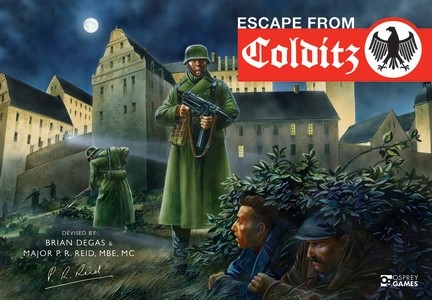
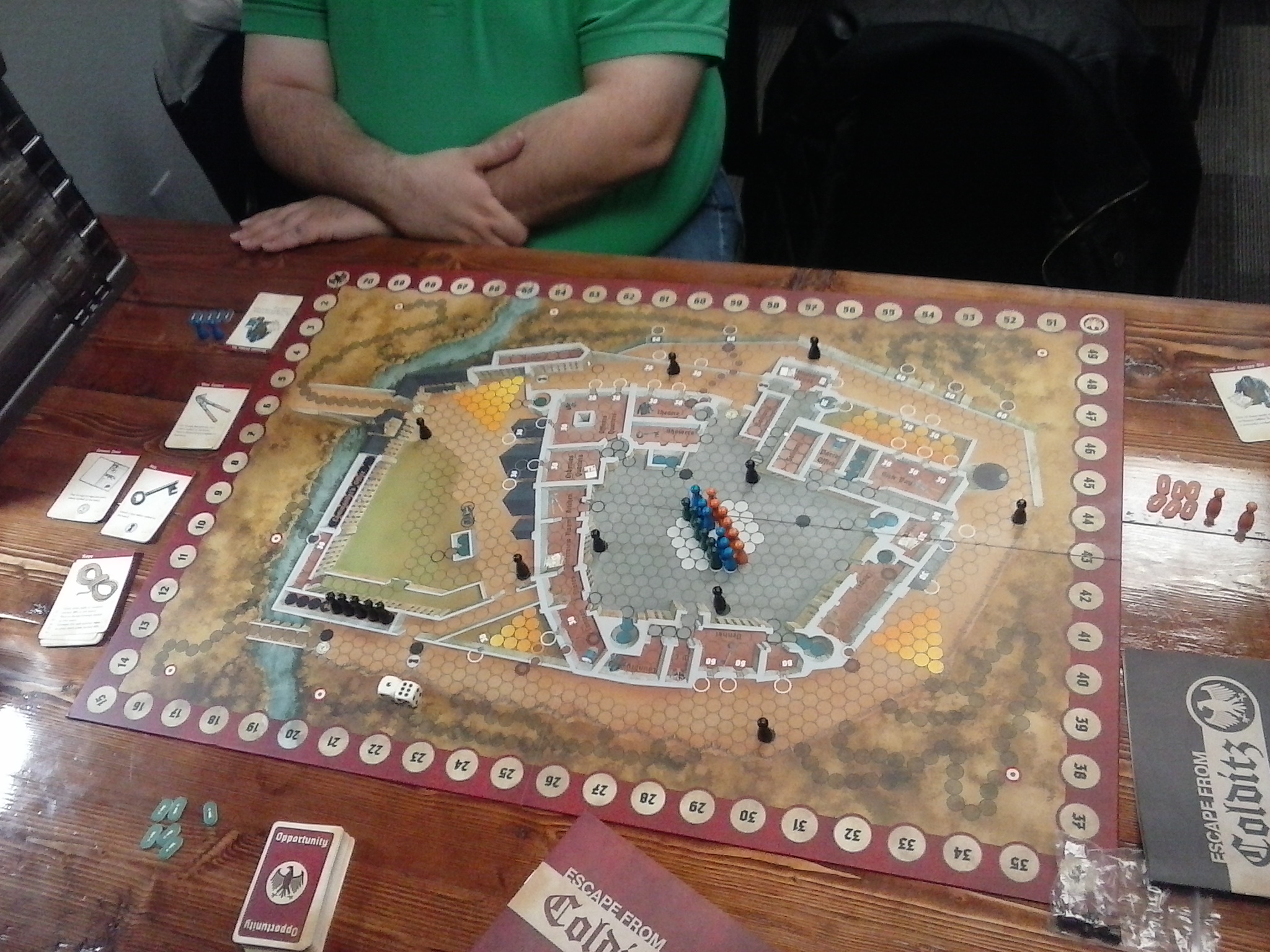
In addition to the box and board, the other components of the game are quite nice. The cards are sturdy and have nice artwork on them. The pawns represent the nations represented (Americans, British, Dutch, French, Germans, and Poles), more specifically Allied prisoners of war and their German guards.
Another fun thing with this game are the surprises hidden among the game components. There are several replicas of artifacts related to the real history of the POW camp, including a postcard from a prisoner to their family, a Red Cross care parcel, a German Wanted poster for escaped prisoners, and a leaflet urging Allied prisoners to cease escaping. The biggest surprise is hidden in the box and I will not give it away, as you will have to get the game to find out, but it will be worth it.
Rules and Game Mechanics
The rules are pretty straightforward. POW pawns are set up in the white-shaded area of the central courtyard of the castle in a specific way, based on the number of players. The game supports 2-6 players and our play test consisted of four of us, which I felt was a nice balance to grasp the workings of the game.
Each round ends with the German player, with each player rolling dice to determine available movement points, which allows the player to move any number of its pawns up to the die roll. If a player rolls doubles, they may re-roll and add that total to their double roll. Further, if a player rolls a total of five or less, they may draw either an Opportunity Card (Allied players), or a Security Card (German), which can be used during their turn to bring about various events that can aid an escape attempt, or hinder it.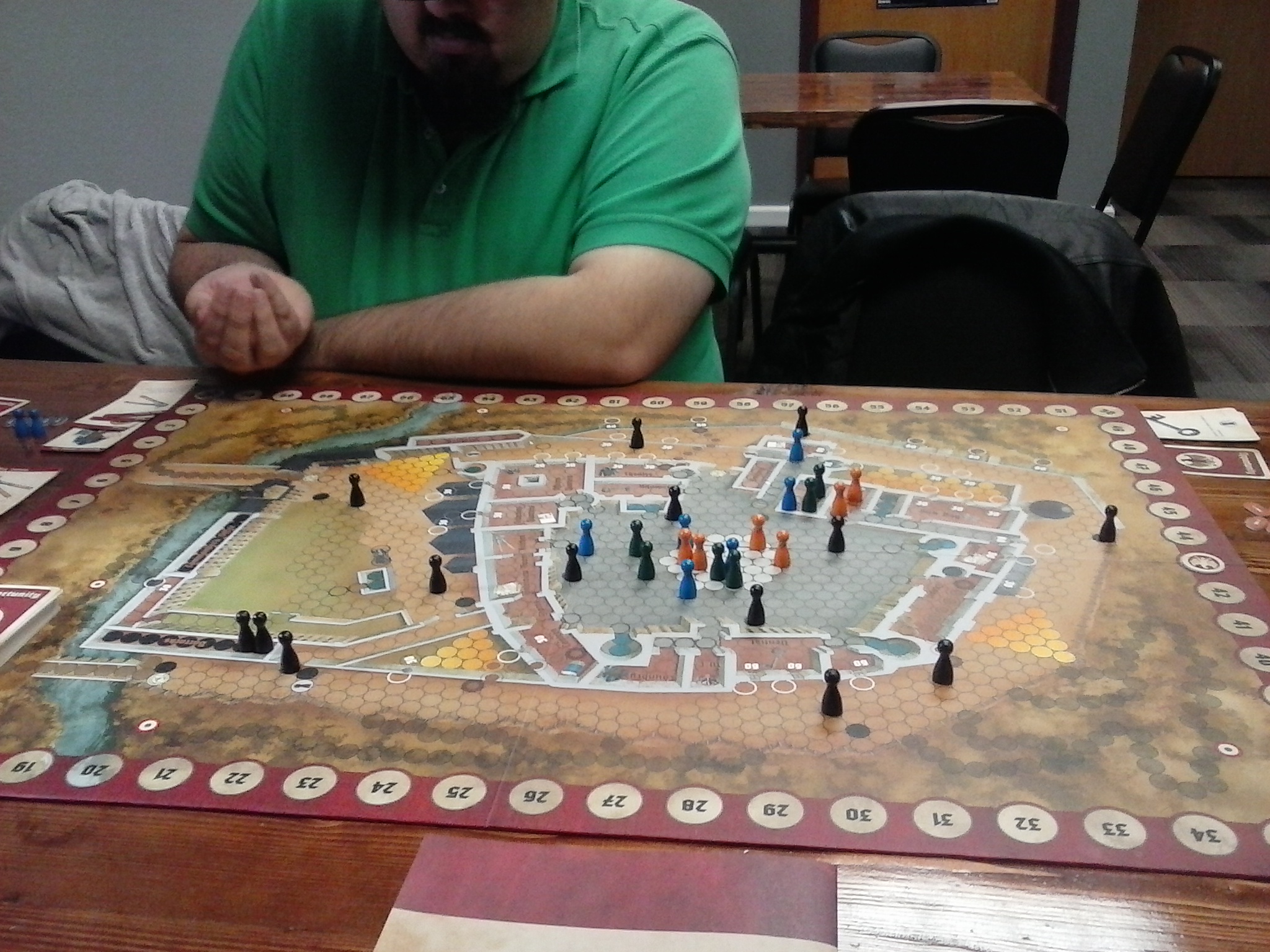
Allied players navigate the castle, attempting to gather their items needed for their escape kits and equipment to help in the actual escape from the castle, all while trying to avoid arrest and being thrown in solitary confinement, or being shot. Once outside the camp perimeter, the POWs attempt to reach one of several targets on the board that signal a successful escape. The game ends when either two pawns of one nation successfully escape, or the countdown marker reaches the eagle (zero rounds left) and no escapes have succeeded.
The game seems to progress fairly quickly and the cards can affect play in many fun and unique ways. Further, you can feel a little rush when a pawn attempts an escape and the player is attempting to reach a target, or stop an escape.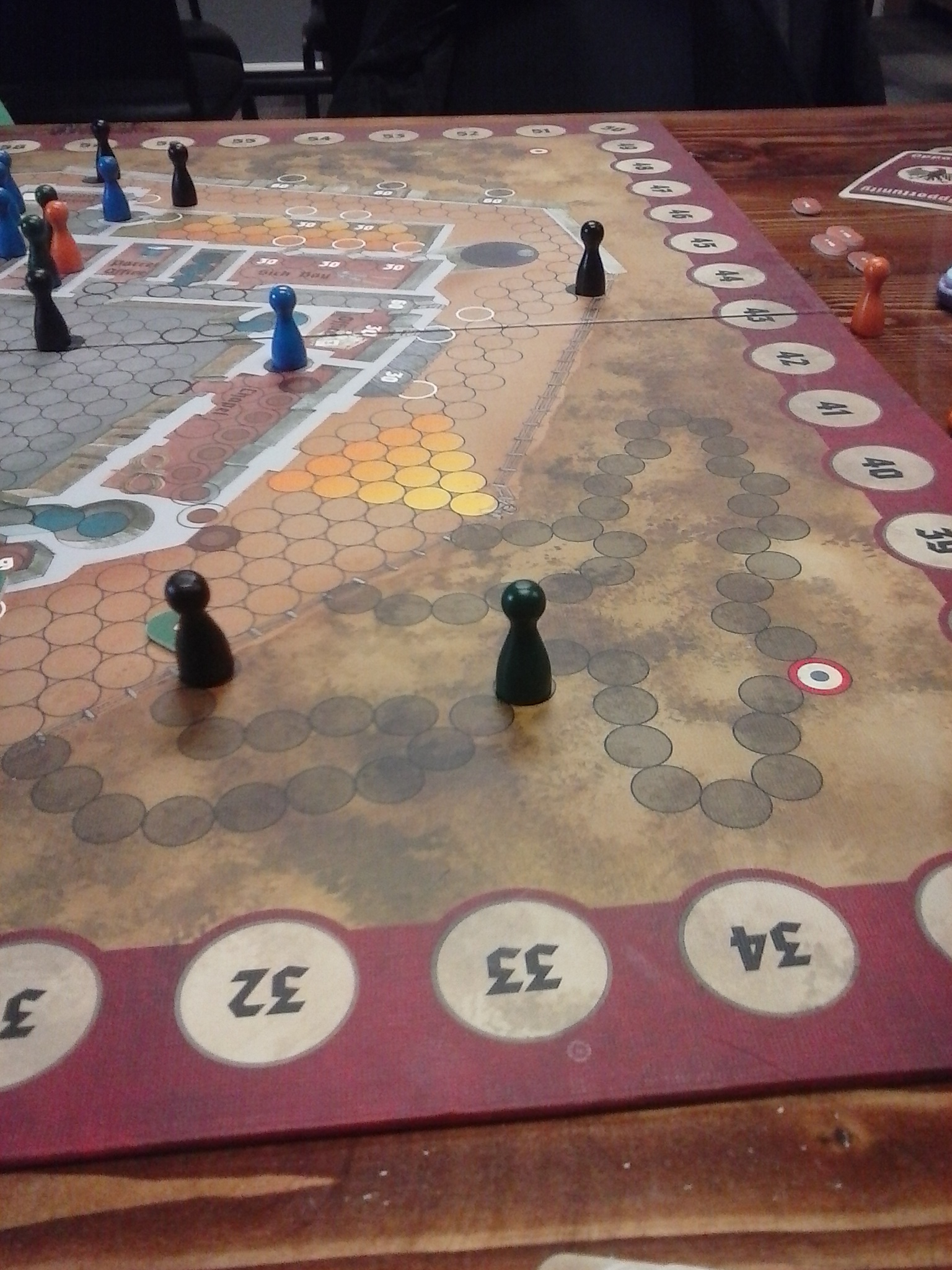
One unique aspect of the game is that the rules from the original 1973 version are included in the rule book to allow one to experience the original style of play, which includes “Do or Die” cards that offer the chance of a player getting out by making a break for it. However, there is great risk, as if that player fails, all its pawns are “killed” and removed from the game.
Criticisms
There is much to like about this game, from its relatively simple mechanics and rules, to its beautiful components. That said, there are a couple criticisms I have on the game. First, the circular spaces that pawns move and land on are a bit too small and tight, which can create a cluttered situation on the board in some regards. Coupled with that are the size of the pawns themselves, which are easy to slip out of one’s fingers and slide a bit easily on the board, which can knock other players’ pieces from where they may have been. Slightly larger spaces on the game board would alleviate this issue, as well as perhaps putting a surface on the bottom of the pawns to prevent them from sliding on the board as easily would also solve this minor problem.
The other has to do with the number of rounds in a game, which the rules suggest starting at 50, with an option of starting at 40 if players are more experienced. Given our game took over 3 hours (despite it being our first time), it seems that 50 rounds might be a bit much and the board has marks for up to 70 rounds. That said, like the issue of board spaces and pawns, this is a minor issue that does not significantly impact my feelings on the game overall.
Final Thoughts and Ratings
Escape from Colditz is a great game with a unique and exciting theme that will appeal to a wide variety of gamers, from those into historical games, to those who enjoy strategy with a twist. Osprey did an amazing job on this reboot of a classic and it’s one that you should have in your game collection.
Ratings:
Components-5 stars (an awesome board and game components with the addition of replica artifacts and a wonderful surprise too)
Rules and Mechanics-5 stars (relatively simple and easy to learn, plus the optional 1973 rules are a nice touch)
Design-5 stars (beautiful artwork and game play)
Price-5 stars (At $65, you definitely get your value with this game.)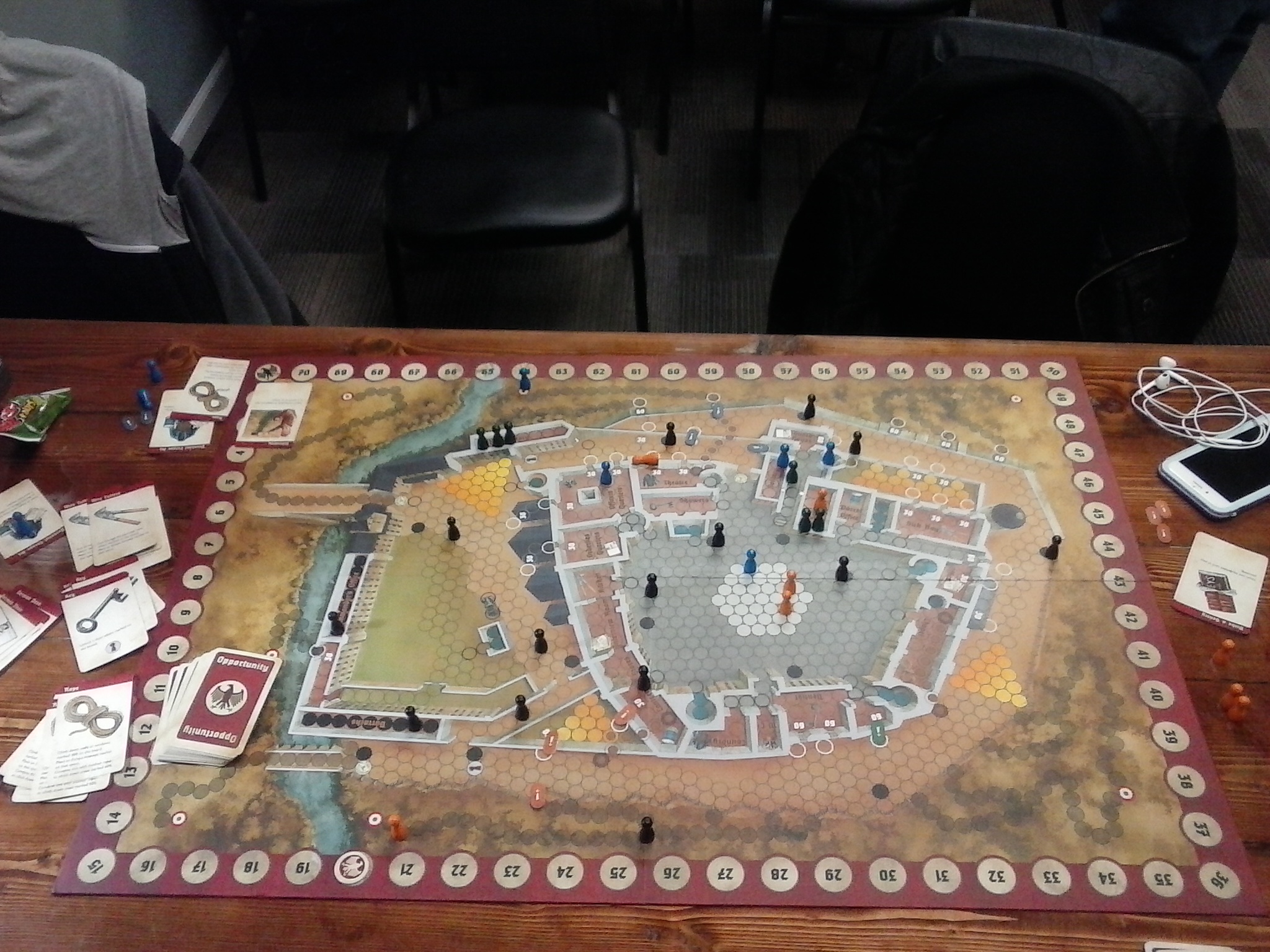




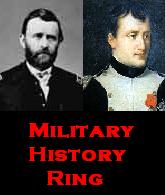














 The King is Dead: Struggles for Power in King Arthur’s Court by Peer Sylvester and illustrated by Peter Dennis ($24.95)
The King is Dead: Struggles for Power in King Arthur’s Court by Peer Sylvester and illustrated by Peter Dennis ($24.95)